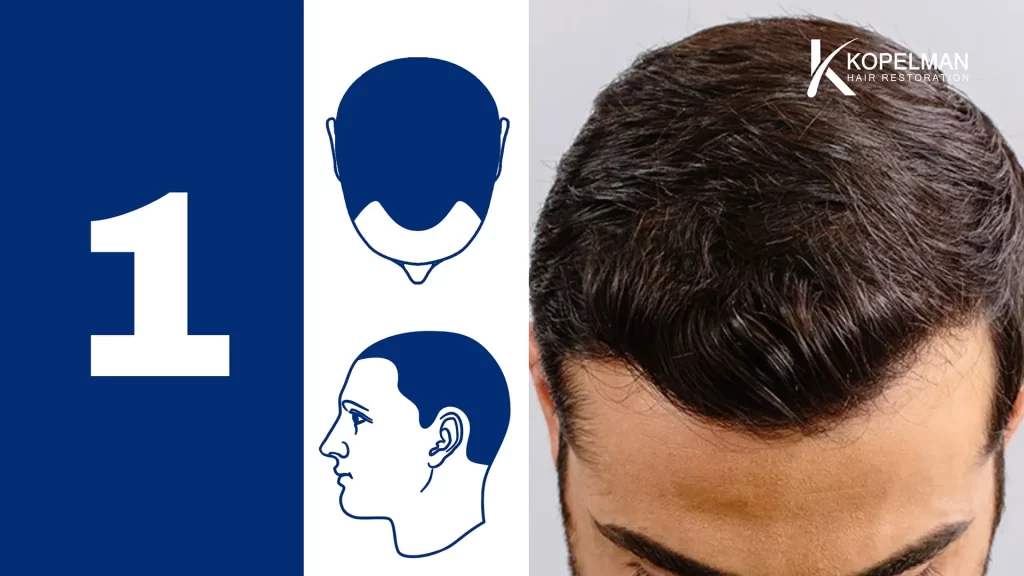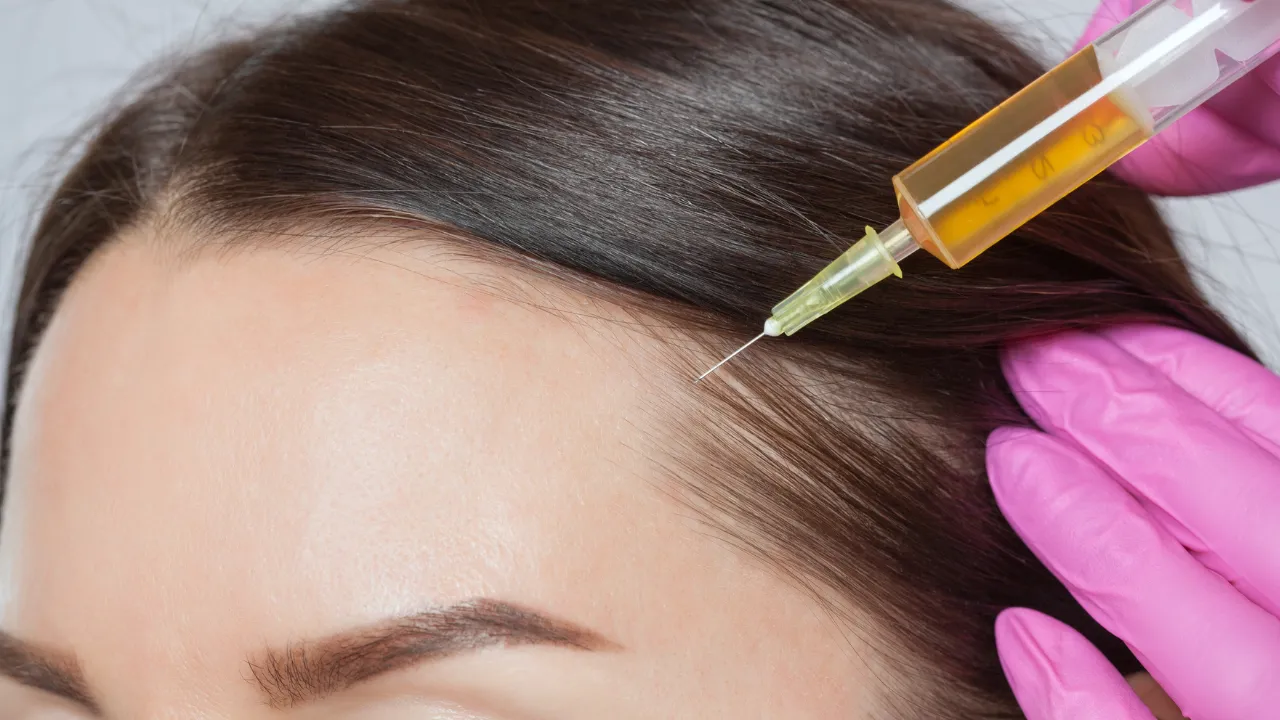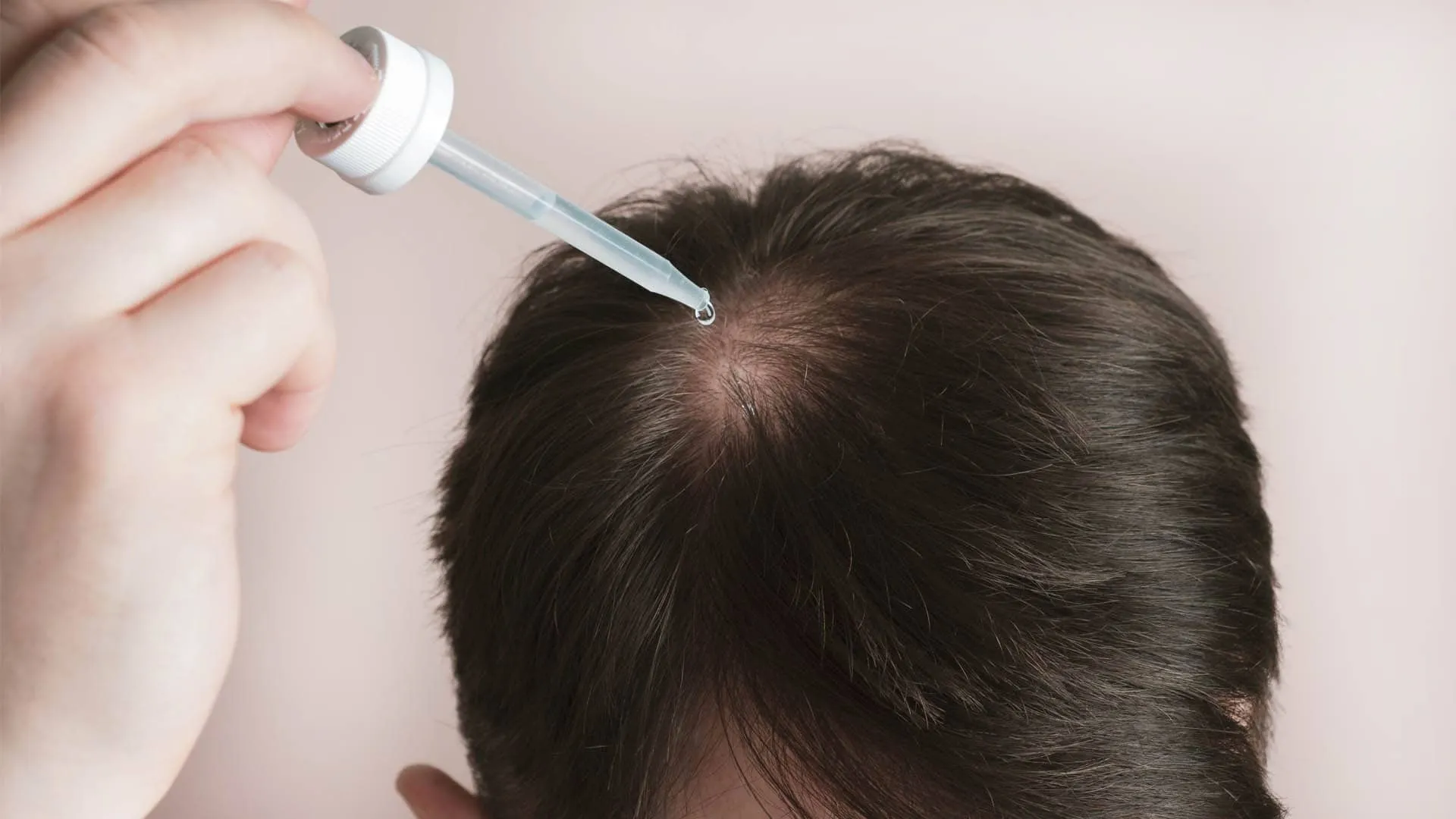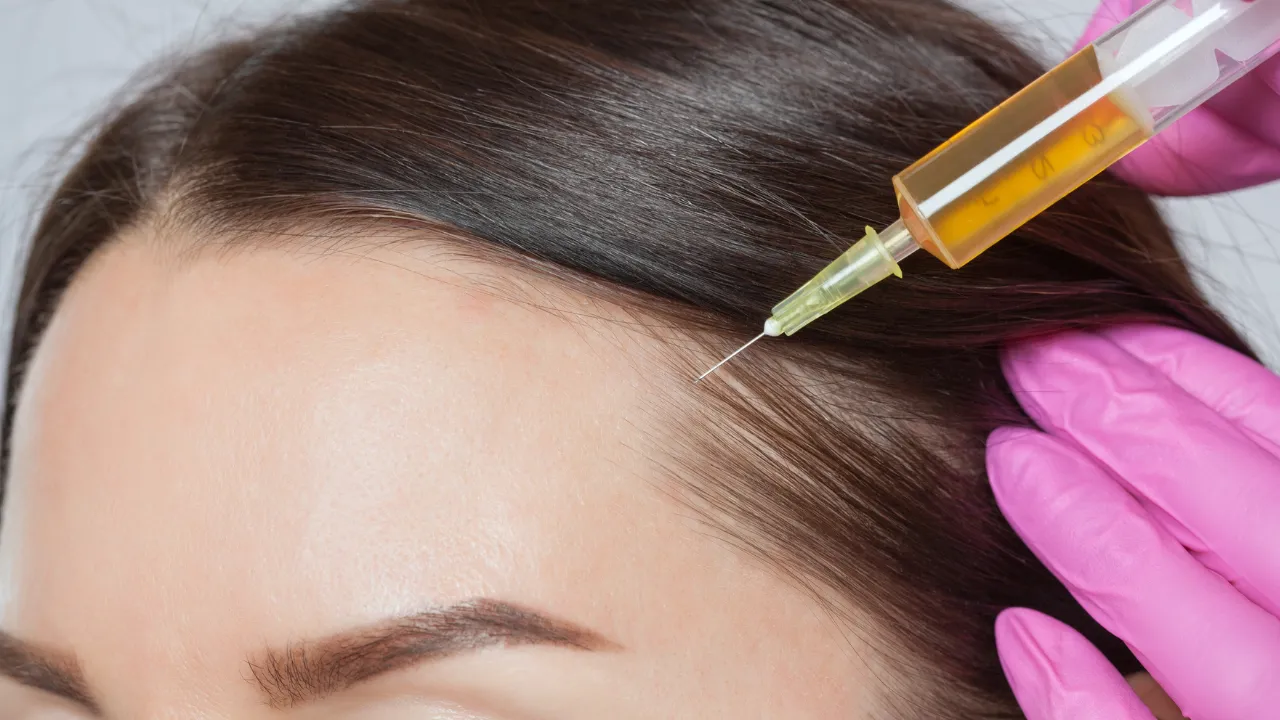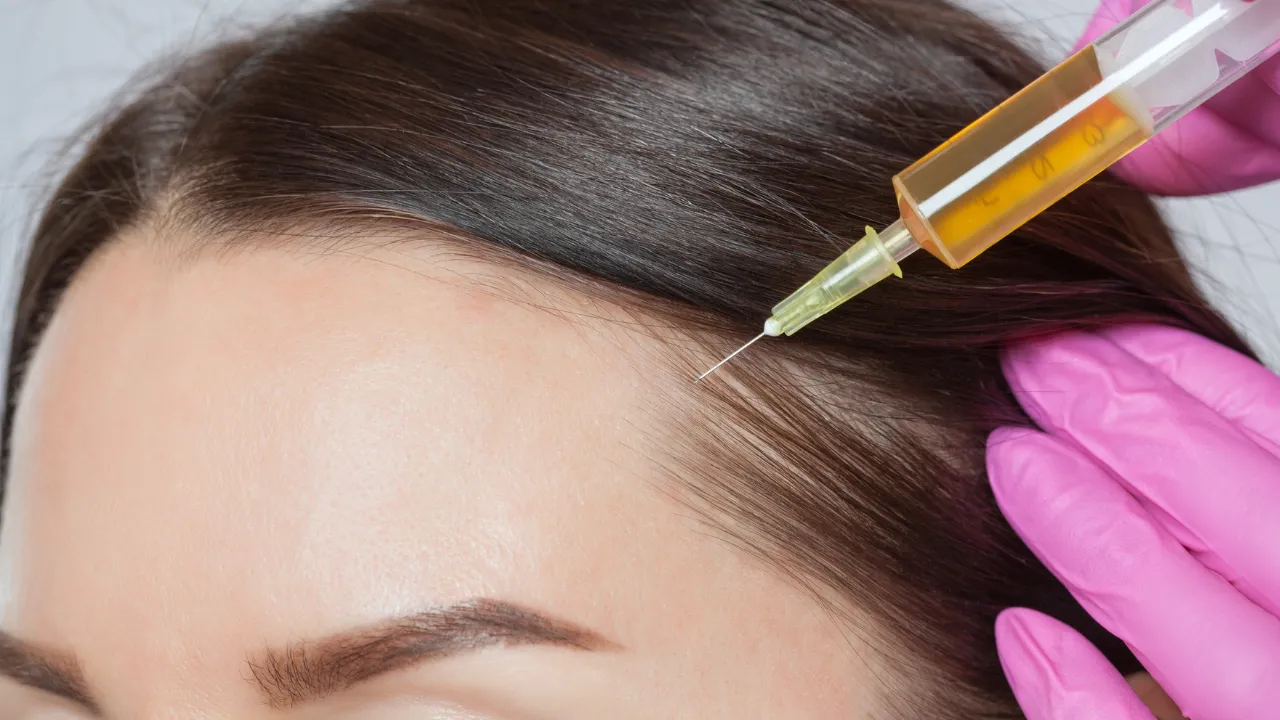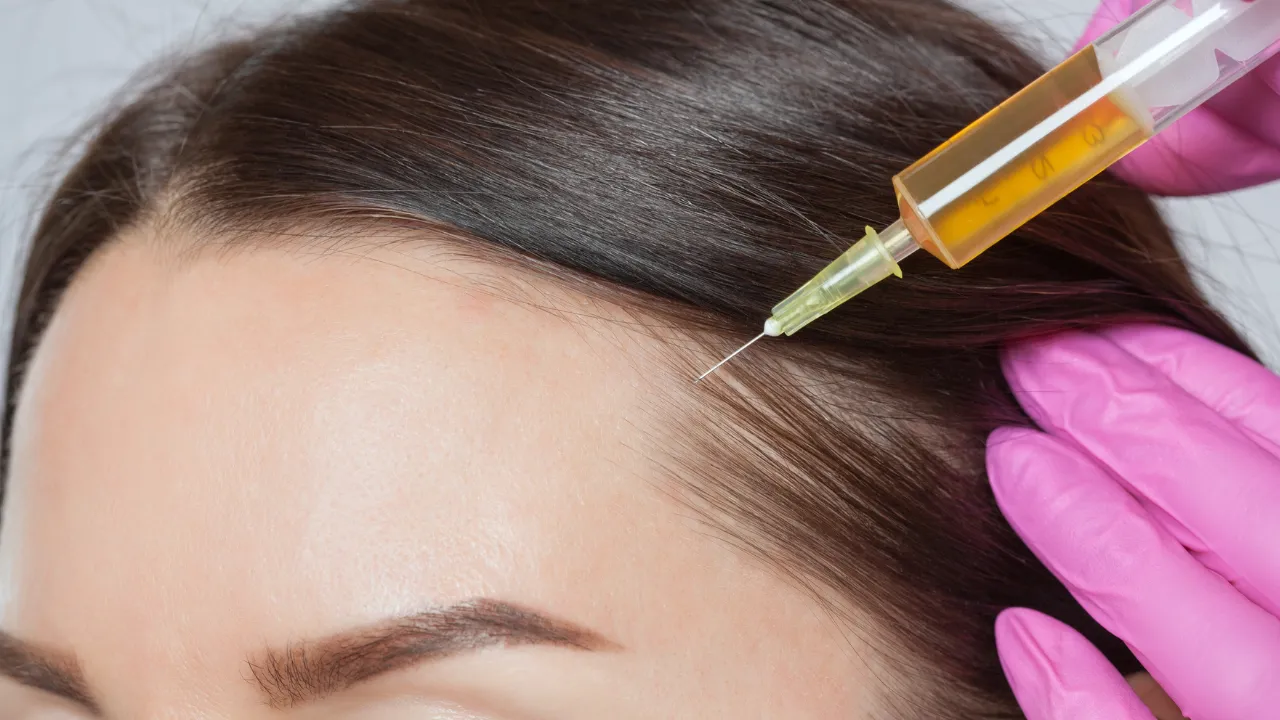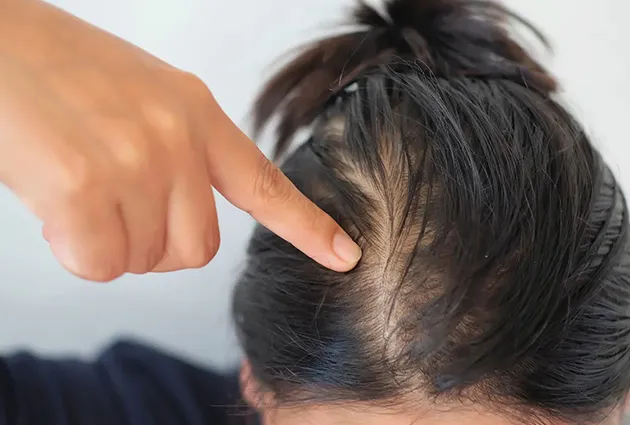Table of Contents
ToggleThe Hamilton–Norwood scale is a widely recognized classification system for tracking the progression of androgenetic alopecia. It breaks hair loss into distinct stages, making it easier for individuals and professionals to understand the severity of hair loss and explore suitable treatments.
Numerous hair restoration clinics utilize this scale to estimate the number of hair grafts needed for a hair transplant surgery, allowing them to provide accurate cost estimates for the procedure.
If you’re concerned about the progression of hair loss, hair restoration Norwood techniques, such as hair transplants or medications like minoxidil and finasteride, can help halt or even reverse the effects. The best treatment depends on the Norwood level of your hair loss, with earlier stages (Norwood 1-3) having more successful outcomes with non-surgical treatments.
This guide explains the origins, purpose, and applications of the Scale in addressing male pattern hair loss.
What Is the Norwood Hair Scale?
Also referred to as the Norwood Balding Scale, is a tool used to classify stages of male pattern baldness. It was developed to provide a universal language for describing patterns of hair loss, starting from minimal recession to advanced balding.
The scale includes seven primary stages, each detailing a specific pattern of hair loss. By categorizing hair loss progression, the Norwood Scale helps individuals and professionals discuss appropriate hair loss treatments, such as medication or hair transplant procedures.
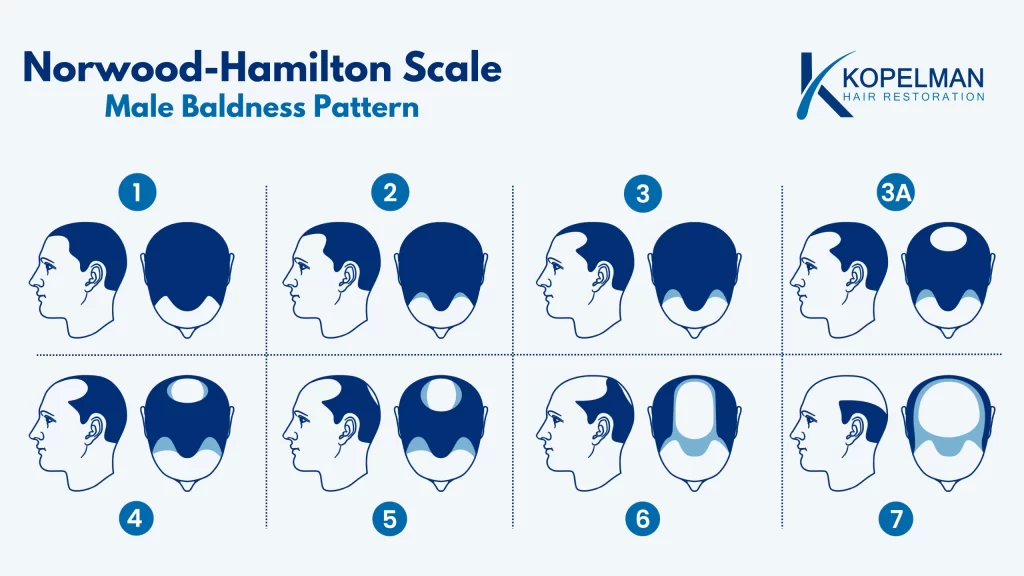
Origins and Purpose of the Norwood Hamilton Scale
It was introduced by Dr. O’Tar Norwood in the 1970s, building on the earlier Hamilton Scale. This evolution created a more detailed framework for assessing male pattern baldness. Its primary purposes include:
- Tracking Hair Loss Progression: It identifies how far hair loss has advanced based on the pattern of hair loss.
- Guiding Treatment Options: Doctors use the scale to recommend suitable interventions for each stage of hair loss.
- Supporting Research: The scale’s consistency aids in analyzing trends and effectiveness in studies about male pattern baldness.
By offering a clear and consistent classification, the Norwood Scale simplifies communication between patients and healthcare providers about hair loss severity and treatment.
Why It’s Widely Used in Hair Restoration
As men age, the Norwood level increases, with each level representing a more significant degree of hair loss. A trusted tool for several reasons:
- Clarity and Simplicity: Its straightforward design makes it accessible to both medical professionals and individuals experiencing hair loss.
- Global Standard: It is recognized internationally as a benchmark for describing male pattern hair loss.
- Treatment Guidance: By identifying the stage of baldness, doctors can recommend tailored solutions, such as medications for early stages or hair transplants for advanced cases.
- Realistic Expectations: It helps patients set achievable goals based on their specific stage.
Whether your hairline recedes slightly or you experience significant hair loss, the Norwood Scale provides valuable insights into your condition and possible treatments.
Norwood Scale Stages Explained
The Norwood Scale divides male pattern baldness into seven stages. These stages offer a detailed view of hair loss progression, from minimal thinning to complete baldness.
Stage 1: Minimal Hair Loss
The Norwood 1 hairline is the first stage of male pattern baldness, where the hairline remains intact with minimal to no recession.
Many individuals experiencing stage 1 hair loss may not notice changes immediately, but it’s an ideal time to begin monitoring the hairline and considering preventive options.
However, it’s important to monitor for early signs of Norwood hairlines that may indicate the beginning of hair loss as one progresses through the stages.
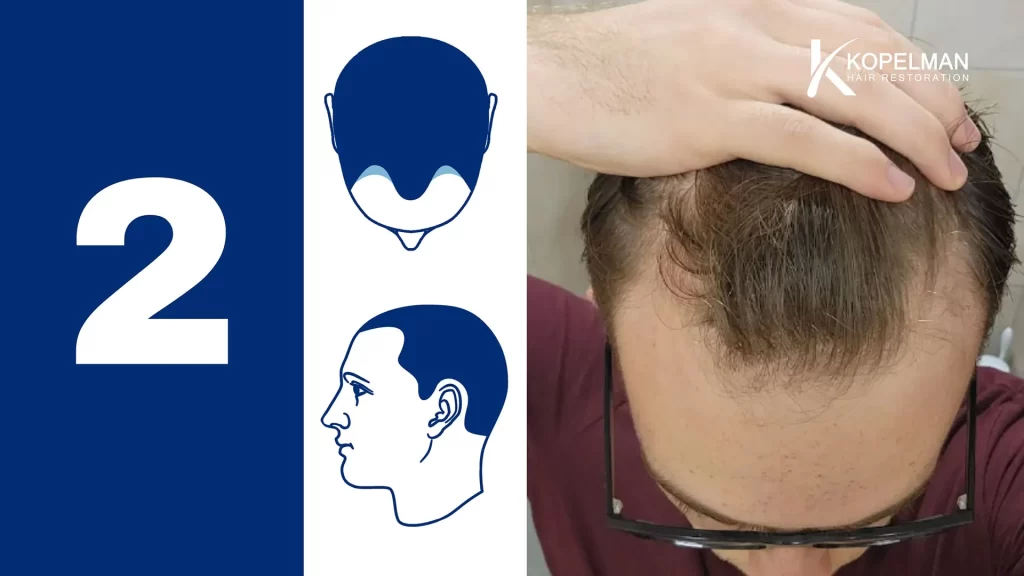
Stage 2: Early Hairline Recession
The Norwood 2 hairline is marked by a slight recession at the temples. This stage often marks the beginning of male pattern hair loss.
At Norwood scale 2, the hairline begins to recede in a mild ‘M’ shape. Preventive treatments, such as topical medications, can help slow progression.
Stage 2 hair loss may be managed with medical treatments before progressing further.
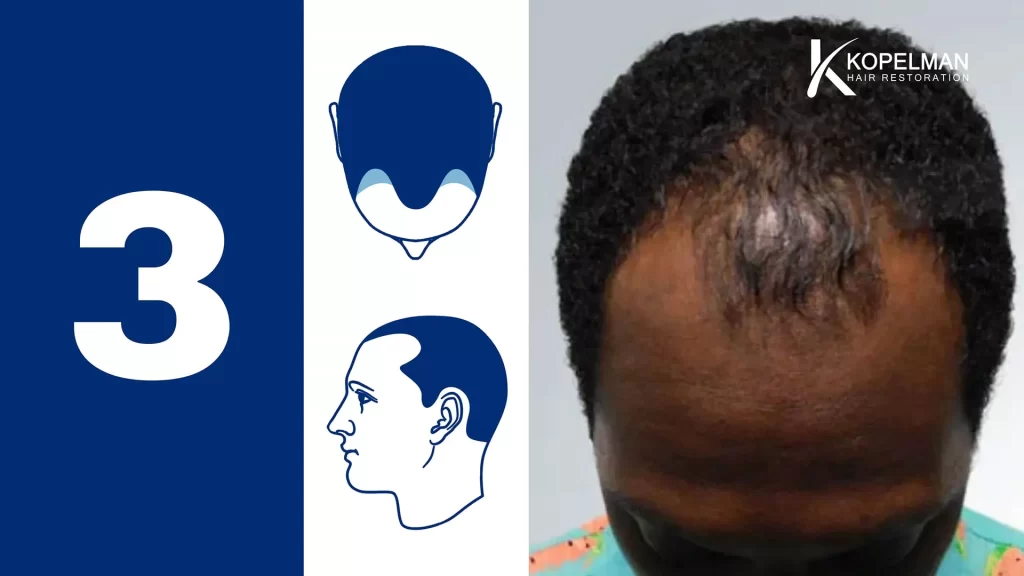
Stage 3: Visible Thinning
By Norwood 3, hair loss is more pronounced and often the first stage considered true balding. Hair thinning becomes more pronounced. The hairline recedes further, and hair loss at the crown, also known as the stage 3 vertex, may appear. Many individuals begin exploring hair loss treatments at this stage.
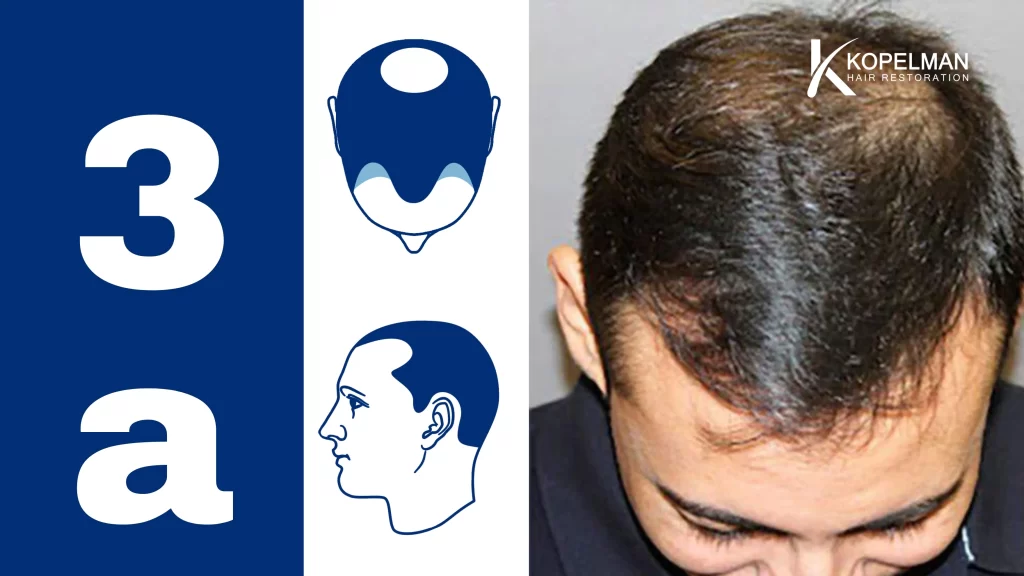
Stage 3A
Norwood Scale 3A is marked by diffuse frontal hairline recession without deep temporal loss. The crown remains intact, but thinning may progress. Treatments like minoxidil, finasteride, or hair transplants can help maintain or restore hair.
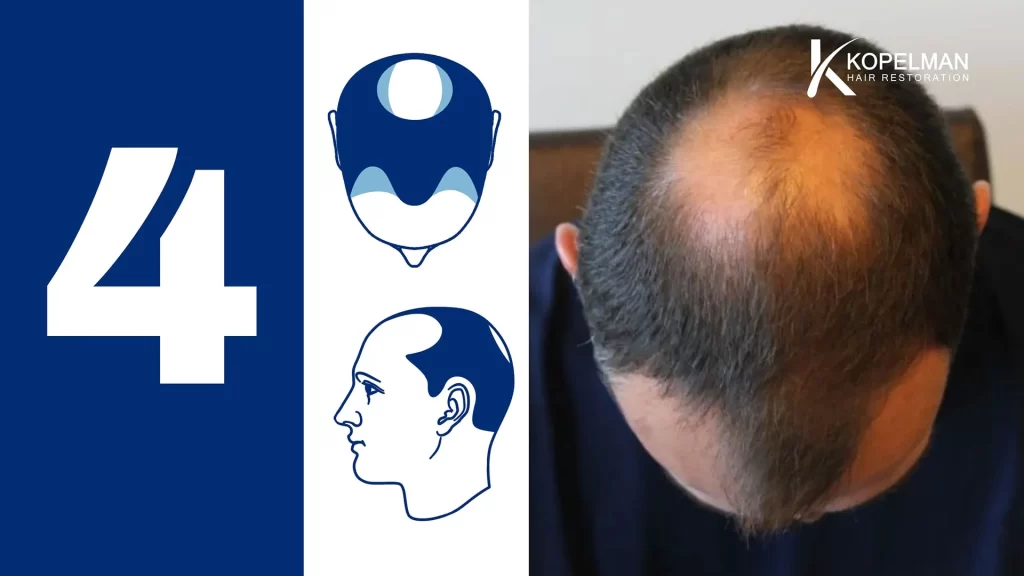
Stage 4: Crown and Hairline Loss
Significant hair loss occurs at the crown and hairline. Balding areas become more noticeable but remain separate. Advanced treatments, such as hair transplants, are often recommended at this stage.
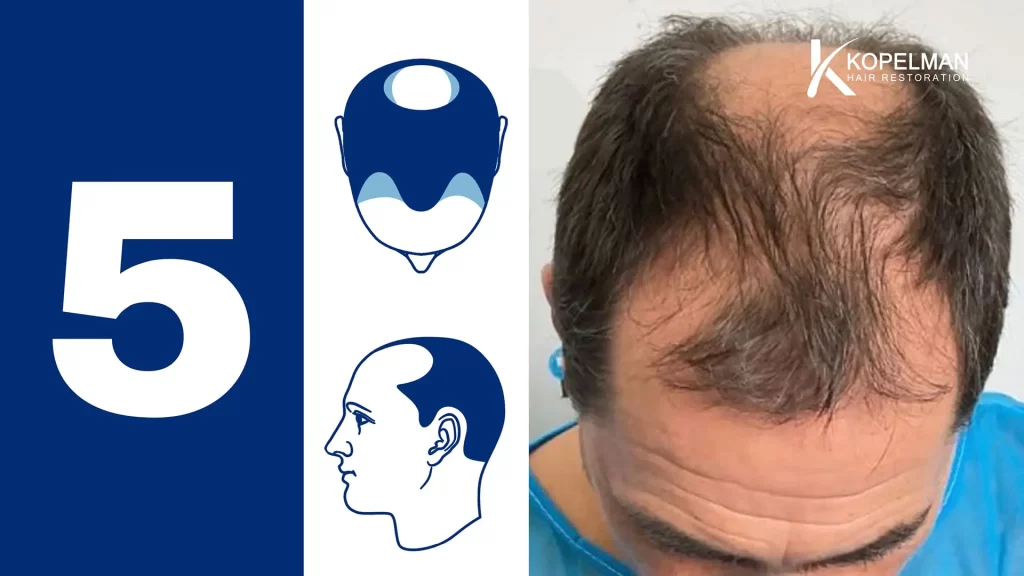
Stage 5: Advanced Hair Loss
The balding areas at the crown and hairline merge. A narrow band of hair remaining around the sides and back of the head separates the bald regions, but thinning in this band may also begin.
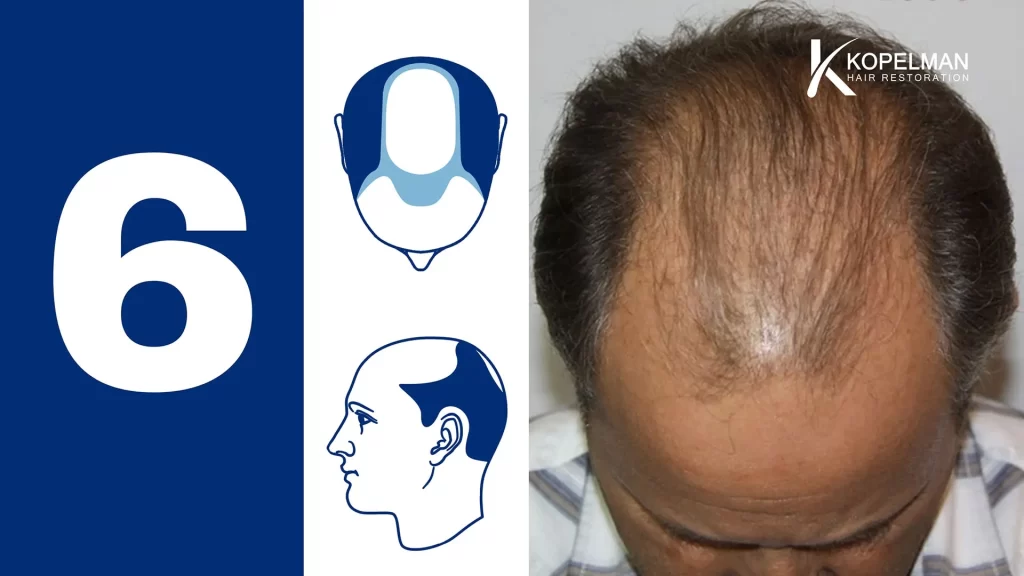
Stage 6: Severe Hair Loss
Hair loss extends across the top of the head, leaving only a thin band of hair around the sides. The bridge of hair separating the crown and front of the scalp is gone, making baldness more uniform.
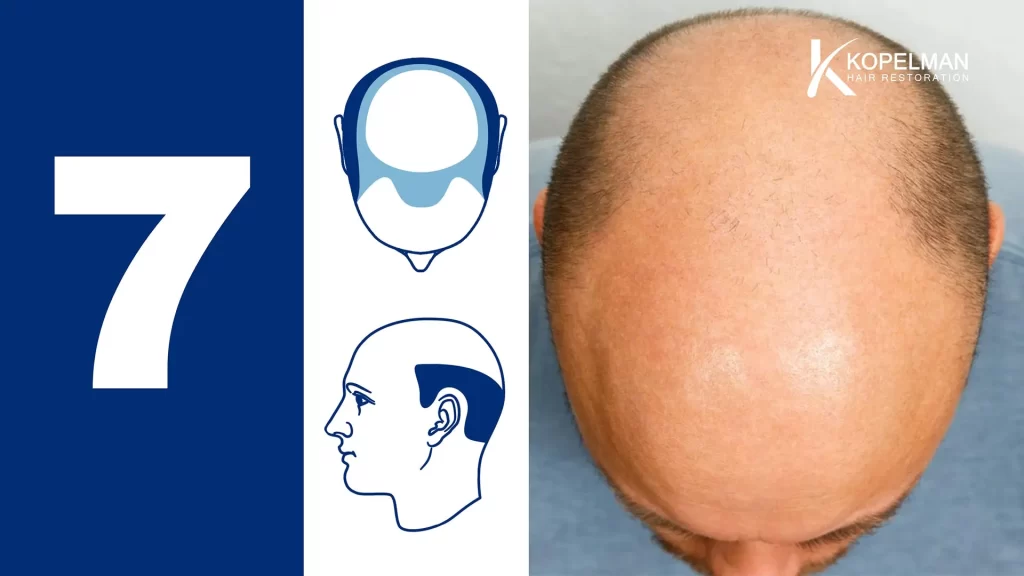
Stage 7: Complete Baldness
This stage represents the most advanced form of male pattern baldness. Only a thin ring of hair remains around the sides and back of the scalp. Treatment options focus on restorative surgery or cosmetic solutions, such as scalp micropigmentation.
Wondering how to Stop Losing Hair? Check out our video on Zeph Sanders’ remarkable journey of regrowing his hair.
Norwood vs. Ludwig Scale for Women
While the Norwood Chart focuses on male hair loss, the Ludwig Scale is designed for women. Women’s hair loss typically involves diffuse thinning across the scalp rather than the receding hairlines seen in men. The Ludwig Scale’s emphasis on thinning patterns makes it a better fit for diagnosing female hair loss.
Alternatives to the Norwood Scale
Other tools and technologies can complement or replace the Norwood Hair Scale in certain scenarios:
- Savin Scale: Measures hair thinning and density changes in women.
- BASP Classification: Combines male and female hair loss patterns into a single framework.
- Dermoscopic Imaging: Advanced imaging is used to assess hair follicles and scalp health more precisely.
These alternatives can provide more tailored insights for specific hair loss cases.
How Do Trichologists Utilize the Norwood Scale?
During a hair loss consultation, a trichologist evaluates your hair and scalp to identify the cause and severity of your hair loss. The Norwood scale serves as an essential tool for assessing the stage of hair loss.
Trichologists use the Norwood scale to pinpoint your current level of hair loss, allowing them to suggest suitable treatments. For those in the early stages of hair loss (typically stages 2 or 3), they might recommend treatments like Minoxidil to help preserve existing hair and encourage healthy growth.
Additionally, the Norwood scale can help forecast the progression of hair loss across different scalp zones.
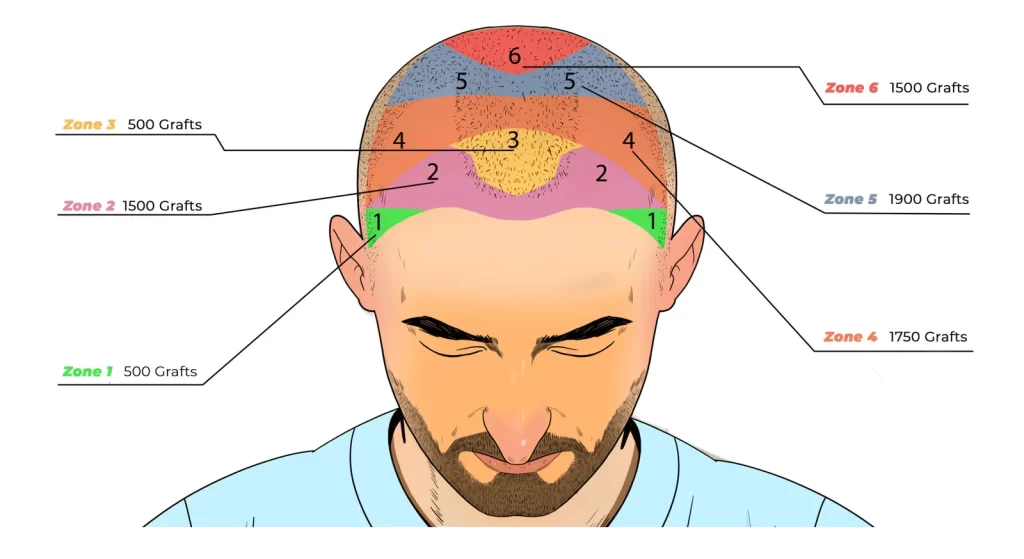
Why we use the Norwood Scale at Kopelman Hair
It remains a trusted tool for understanding and addressing male pattern baldness. Categorizing hair loss into clear stages helps individuals and professionals explore appropriate treatment options and set realistic goals.
Using the Norwood Scale Effectively
To use the Norwood Scale effectively:
- Identify your stage to understand the extent of your hair loss.
- Consider treatment options suitable for your stage, such as medications or hair transplants.
- Monitor changes over time to track treatment progress.
Seek Expert Advice for Hair Loss
While the Norwood Scale is helpful, consulting a specialist is essential for accurate diagnosis and personalized care. Consider speaking with Dr. Kopelman. This father-son team has more than 35 years of experience in hair restoration.
They focus on personalized treatments for every client. Dr. Kopelman’s expertise can help you find the right solution tailored to your unique needs. Schedule a consultation today to explore your options and take the first step towards achieving your hair goals.
FAQs About the Norwood Scale
Is Norwood 2 Balding?
Norwood 2 is not considered full balding but indicates the early stages of male pattern hair loss. The hairline begins to recede slightly, forming an “M” shape. Monitoring and preventive care can slow further progression.
Can Stage 3 Hair Loss Be Reversed?
Stage 3 hair loss is more advanced, with noticeable thinning and possible crown loss. While full reversal may not be possible, treatments like minoxidil, finasteride, or hair transplants can improve hair density and slow future loss.
How Accurate Is the Norwood Chart?
The Norwood Chart provides a reliable way to classify stages of baldness but may not account for all variations in hair loss patterns. For precise diagnosis and treatment, consult a hair restoration expert.


